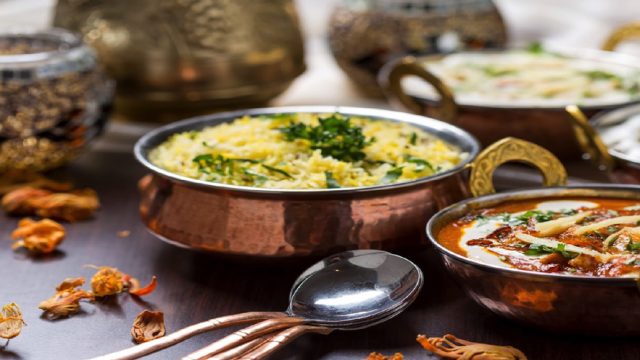Given Hyderabad’s preoccupation with food, it seems quite appropriate that the first Nizam chose the kulcha as the official emblem of the Asaf Jahi dynasty. Popular folklore has it that Asaf Jah went to visit the Sufi saint Hazrat Nizamuddin Aulia before embarking on his journey to the Deccan, and Hazrat Nizamuddin invited him to share his simple meal. After wolfing down four kulchas, Asaf Jah stopped and apologised for his hunger, but the Sufi saint urged him to go on and eat as many as he could. Asaf Jah finally ate seven kulchas, and Hazrat Nizamuddin blessed him saying that seven generations of his family would rule the Deccan. A grateful Asaf Jah had the kulcha embroidered onto the royal flag. The Nizams did rule for seven generations, and were great connoisseurs of food, feasting on elaborate 10-course meals on a daily basis. Hyderabadi food, as it’s come to be known, like the city’s culture, heritage and language, is a mélange of several influences — Hindu, Muslim, Indian and foreign. Haleem, a Hyderabadi favourite, is a perfect example of this process of culinary assimilation. A Middle Eastern import, haleem is traditionally a mild, easily digested meat and wheat porridge eaten by Muslims for Ifttar to break the Ramzan fast. But the delicious Hyderabadi variation is anything but mild and a meal in itself with a variety of garnishes, which, besides being served at weddings and other celebrations, can be found the year round in local restaurants. Another Hyderabadi delicacy, pathar ka gosht, consists of flattened marinated meat cooked on sizzling pathar (stone) slabs. It is believed that the stone releases its own minerals, imparting a unique taste to the kebab.
A Short History of Hyderabadi Cuisine
The kulcha was the official emblem of the Asaf Jahi dynasty

A Short History of Hyderabadi Cuisine
A Short History of Hyderabadi Cuisine



